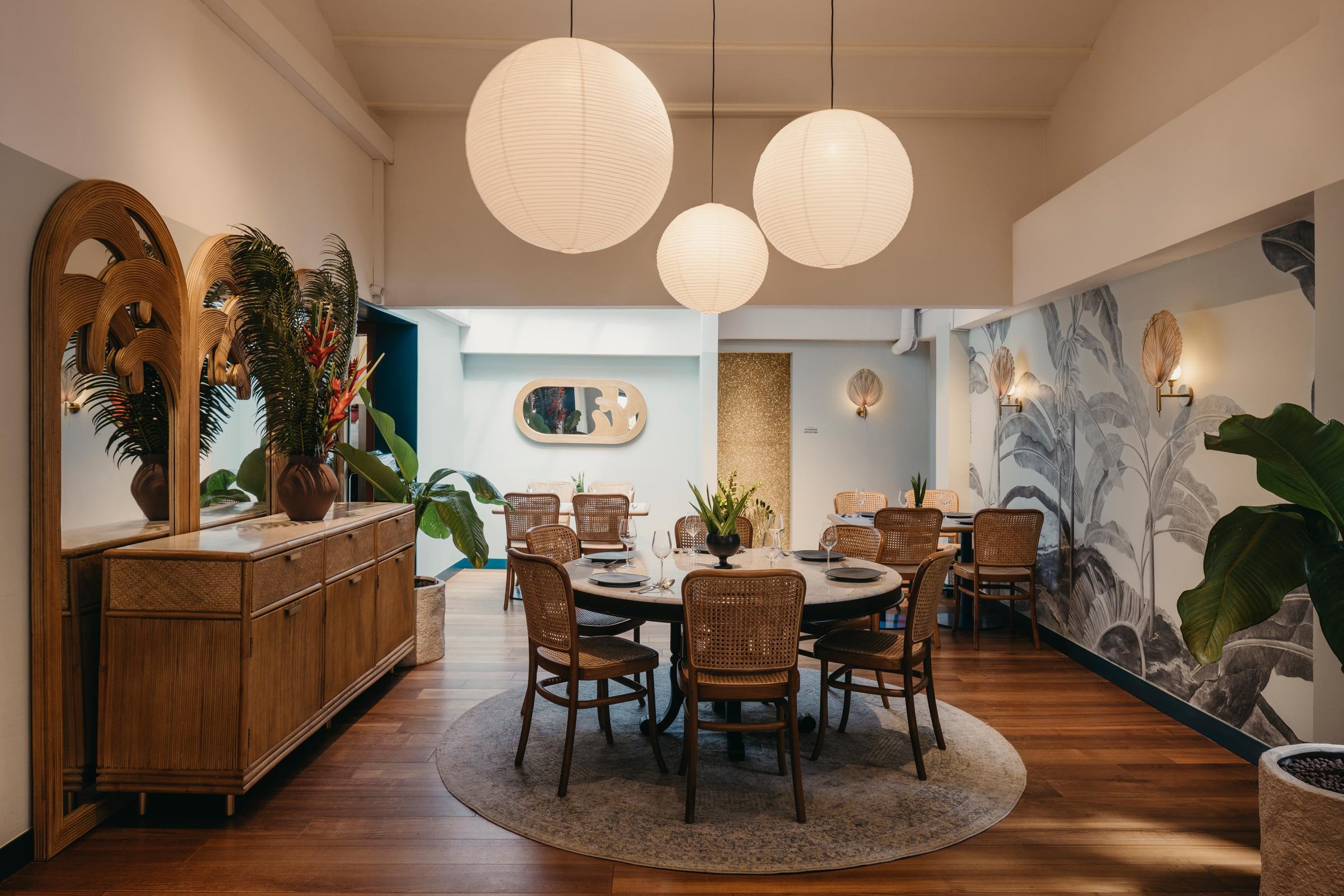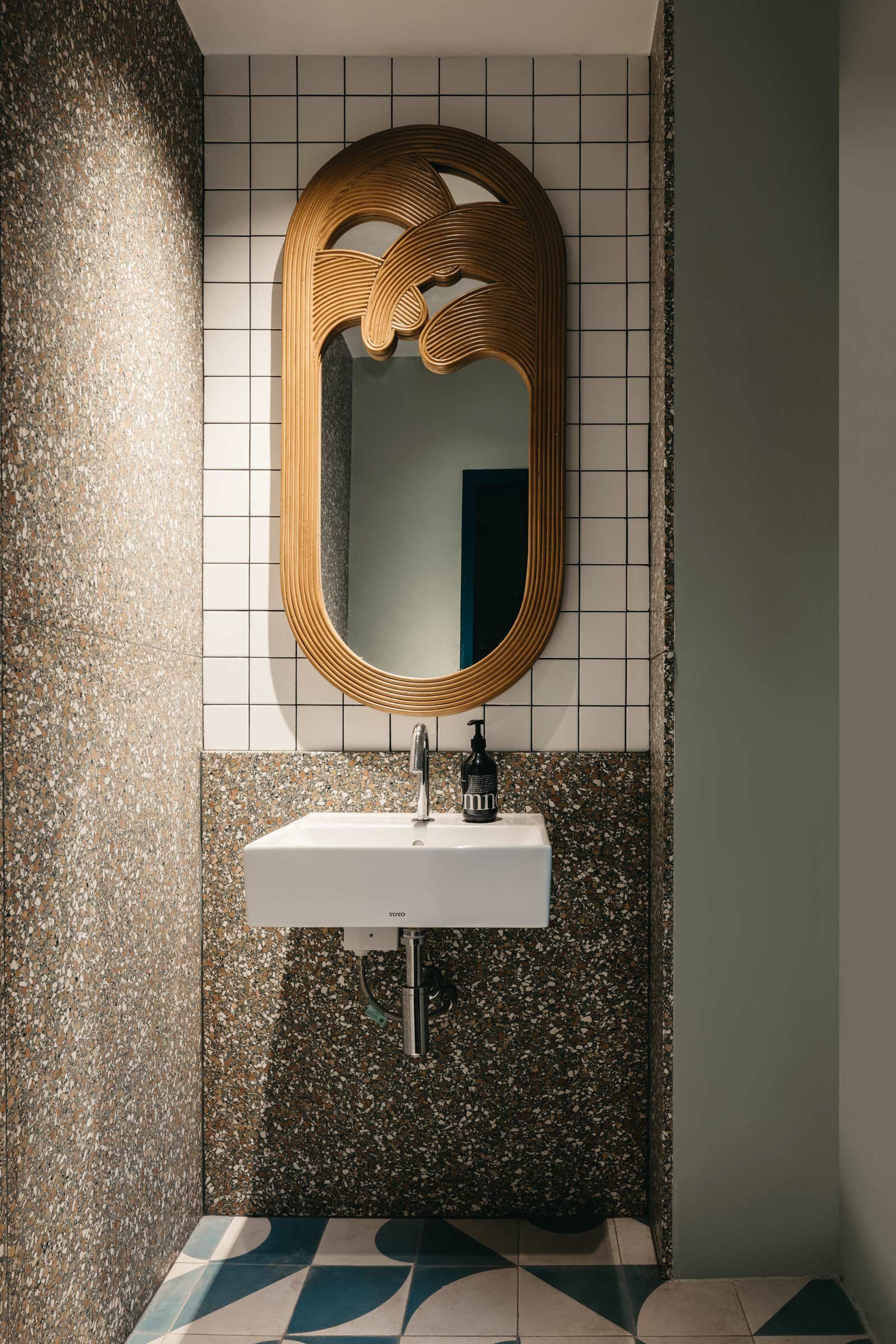Tropical Flavours at The Coconut Club
Takenouchi Webb weaves together breezy, casual materials with modern flair at the new location of Singaporean nasi lemak restaurant The Coconut Club
Nasi lemak is a distinctive Malaysian dish of rice cooked in coconut milk and pandan leaves, served with sides of anchovies, cucumbers, peanuts, boiled eggs and meat. In Singapore, The Lo & Behold Group has elevated the hawker centre staple with The Coconut Club, which first opened in 2016. Now the restaurant has moved to a new location on Beach Road, with interiors by local design firm Takenouchi Webb.
Taking over two storeys of a shophouse, the restaurant exudes a casual yet modern feel. The space opens up to the five-foot way with a row of outdoor seating, while a bar fronts the restaurant and a large, solid timber communal table with organic edges anchors the interior. Stacks of bowls and carafes on open shelves below the street-facing counter create a domestic, inviting picture.
But it’s the materials that really bring out the modern tropical feel. ‘We wanted to select materials that reflect the region and culture of the food, and root the venue in Singapore,’ says Marc Webb, one half of Takenouchi Webb. A wall of terracotta tiles wraps the open kitchen’s facade, while blue and white encaustic cement tiles — the kind traditionally used for shophouse floors — bridge past and present with an abstract, graphical motif.
These matt, tactile materials are juxtaposed with the Raggio Verde marble bar counter, its green tinge complementing the ferns and palms that dot the restaurant. Natural materials like rattan and bamboo are applied generously in the decorative elements, lampshades and loose furniture. On a pistachio-coloured wall, a row of customised bamboo-framed mirrors introduces a sense of rhythm. ‘Their designs reflect a tropical motif and are intended to represent the arching branches of palm trees,’ Webb explains.
Upstairs, the palette is similar but the mood is more intimate. The heritage of the building is emphasised through the timber plank flooring, chosen ‘to emphasise the shophouse feel of the space,’ Webb says, and the bringing in of natural light from the air well at the rear. Taking centre stage is a botanical mural by local artist Aeropalmics, where palms writ large in the hand-drawn, realist style of 19th-century plant studies reiterate the restaurant’s context. Takenouchi Webb’s penchant for nuanced detailing is found in the fan-like bamboo wall lamps and perfect orbs of Japanese lamps — graceful touches that bring a genteel touch to the prosaic yet beloved nasi lemak.
Text / Luo Jingmei
Images / Studio Periphery






















